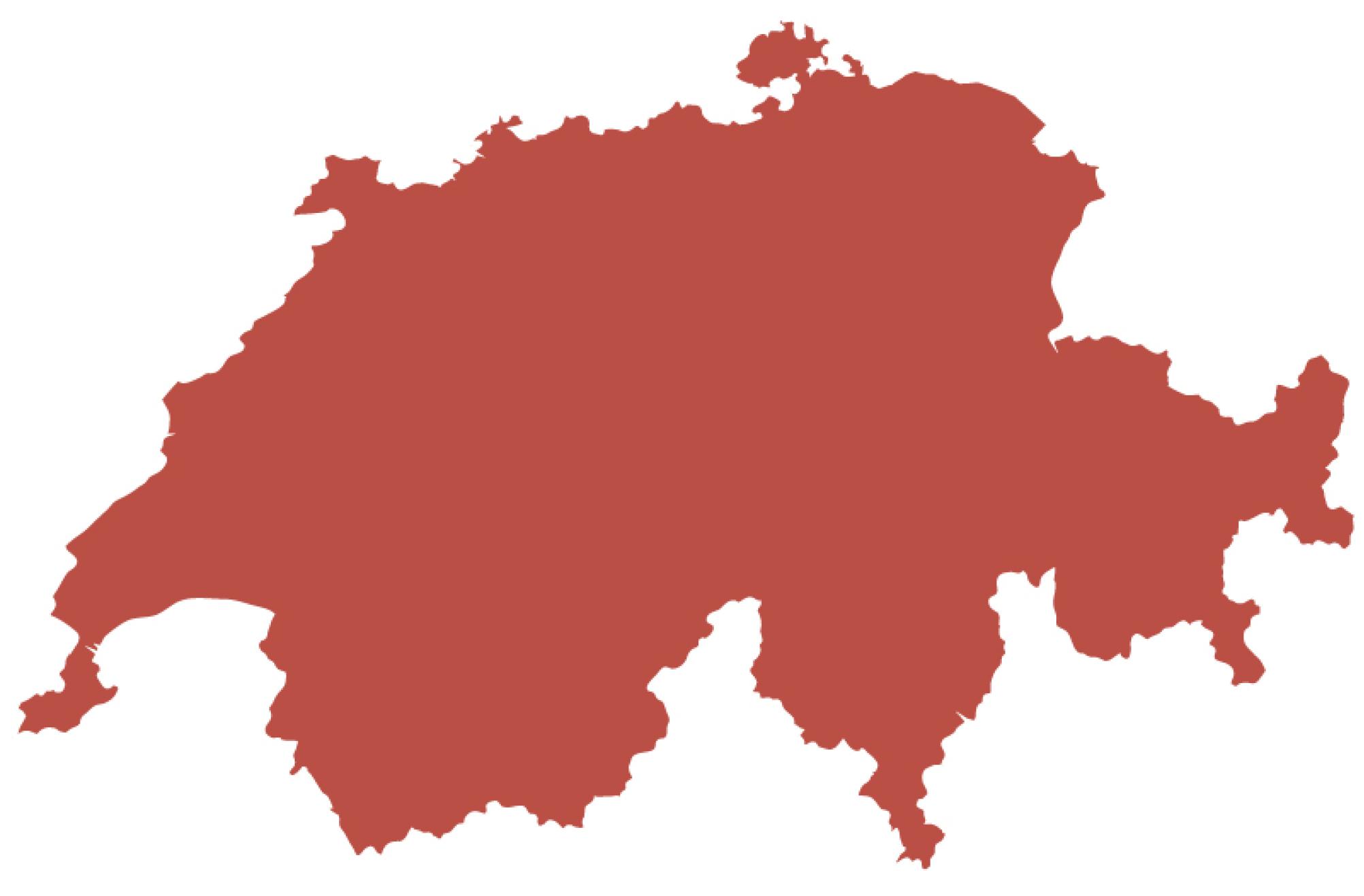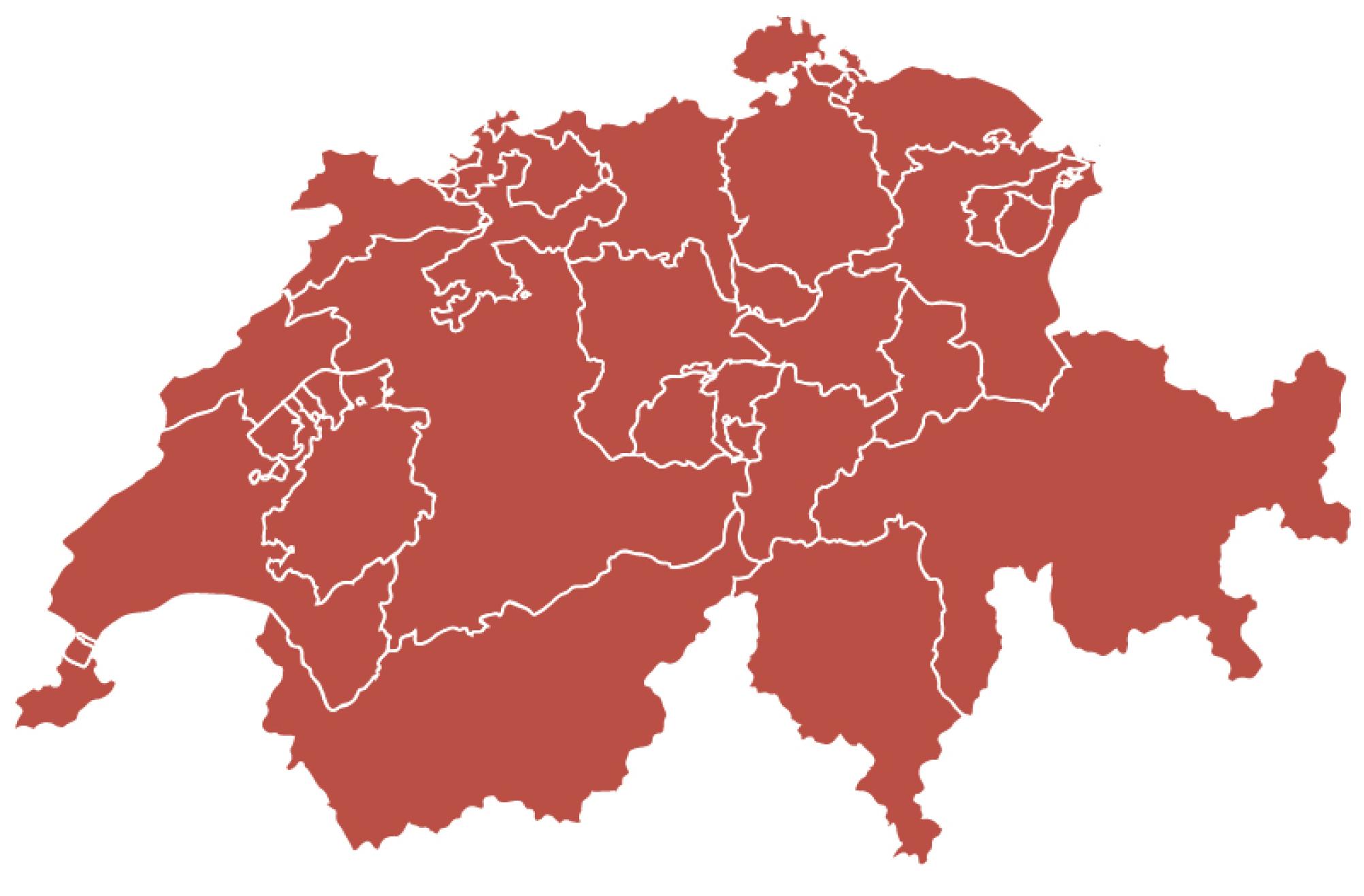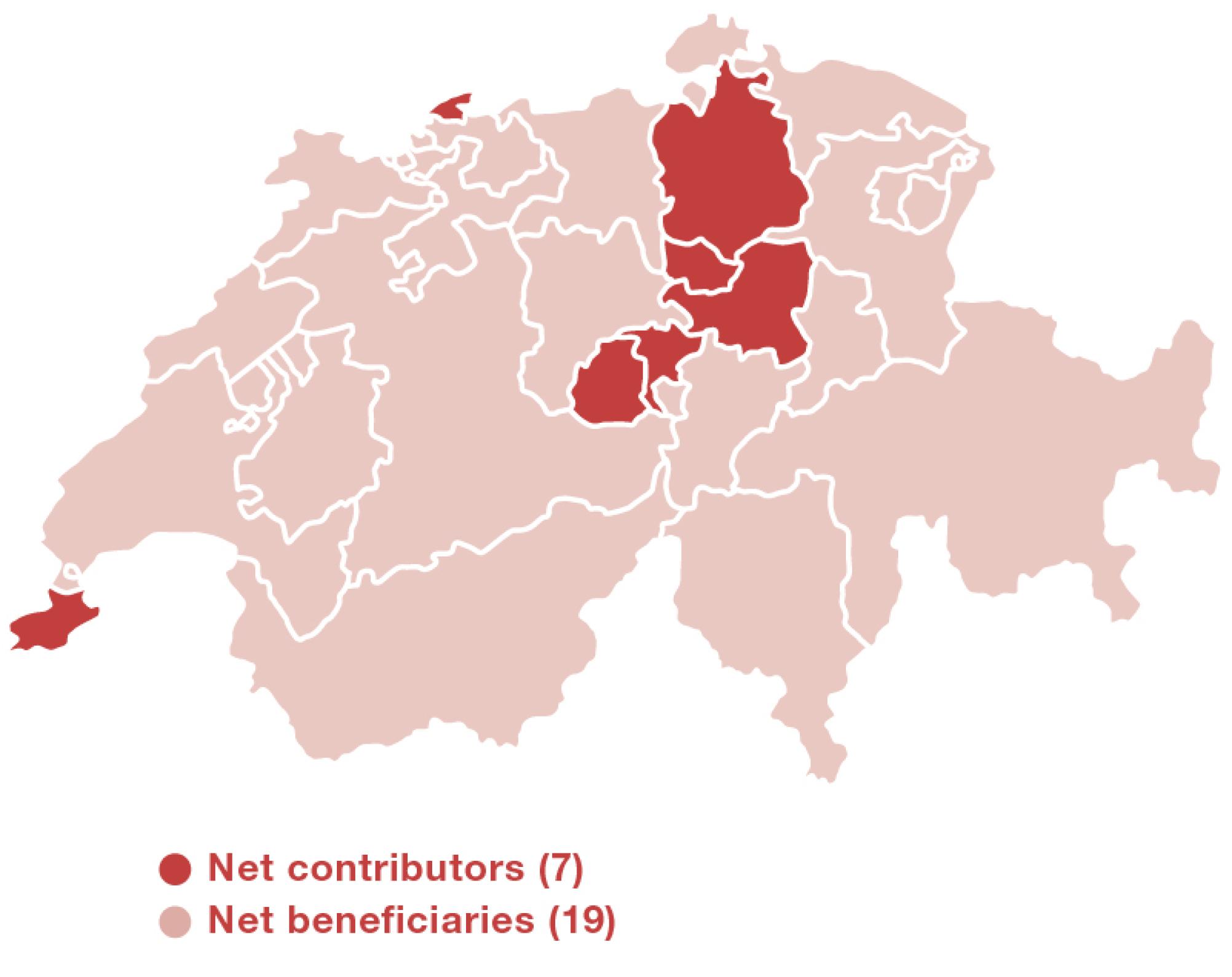Federalism
Switzerland is a federal state: state power is shared between the federal government, the cantons and the communes. The cantons and communes have broad scope in carrying out their responsibilities. Federalism makes it possible for Switzerland to exist as one entity – in spite of four linguistic cultures and varying regional characteristics.
Video Federalism (in German)
1
Switzerland, which is also referred to as the Swiss Confederation, has been a federal state since 1848.

Confederation
The Federal Constitution defines the Confederation’s tasks and responsibilities. These include Switzerland’s relations with the outside world, defence, the national road network, and nuclear energy. Switzerland’s Parliament, the Federal Assembly, is made up of the National Council and the Council of States; the government comprises seven federal councillors, and the Federal Supreme Court is responsible for national jurisprudence. The Confederation is financed among other means through direct federal tax.
85 per cent of the domestic population lives in urban areas.
11 per cent of all Swiss citizens live outside Switzerland: 788000 ‘Swiss Abroad’.
26
The Confederation is made up of 26 cantons.

Cantons
Each canton has its own
parliament, government, courts and constitution. The cantonal constitution may not contradict the Federal Constitution. The cantons implement the requirements of the Confederation, but structure their activities in accordance with their particular needs. They have broad scope in deciding how to meet their responsibilities, for example in the areas of education and healthcare, cultural affairs and police matters. Each canton levies its own cantonal taxes.
4 cantons are officially multilingual: Bern, Fribourg and Valais have two official languages, Graubünden even has three.
People’s
assemblies (Landsgemeinde) are still held in the cantons of Appenzell
Innerrhoden and Glarus.
2136
The 26 cantons are divided into 2136 communes.

Communes
Each canton determines
itself the division of responsibilities between it and the communes. The responsibilities of the communes include local planning, running the schools, social welfare and the fire service. Larger communes and cities have their own parliaments, and organise their own referendums. In smaller communes, decisions are made by the citizens at communal assemblies. Each commune levies a communal tax.
The smallest commune (Kammersrohr, SO) has a population of 33, the largest approximately 423 000 (City of Zurich).
An average of approximately 38 communes merge every year, thereby reducing the total number of communes.
The National Fiscal Equalisation system
The National Fiscal Equalisation system is an important instrument in ensuring Switzerland's cohesion and reflects its desire for solidarity. The economically stronger cantons and the federal government assist the financially weaker cantons.
When it comes to
fulfilling their tasks, each canton starts with a different set of
circumstances: there are smaller, larger, more urban, more rural and more
mountainous cantons. The National Fiscal Equalisation system is designed to
reduce the economic disparities between the cantons.
The federal government and 7 of the cantons are net contributors: ZG, SZ, NW, GE, BS, ZH, OW.
The remaining 19 cantons receive equalisation payments.

In 2021, CHF 5.2bn flowed into the fiscal equalisation system: 3.5bn from the federal government, 1.7bn from the cantons.
The examples of Jura and Zug
The Canton of Jura, which is financially weaker, receives CHF 168m in fiscal equalisation, or CHF 2291 per inhabitant.
The Canton of Zug, which is financially stronger, contributes CHF 332m, or CHF 2662 per inhabitant towards fiscal equalisation.